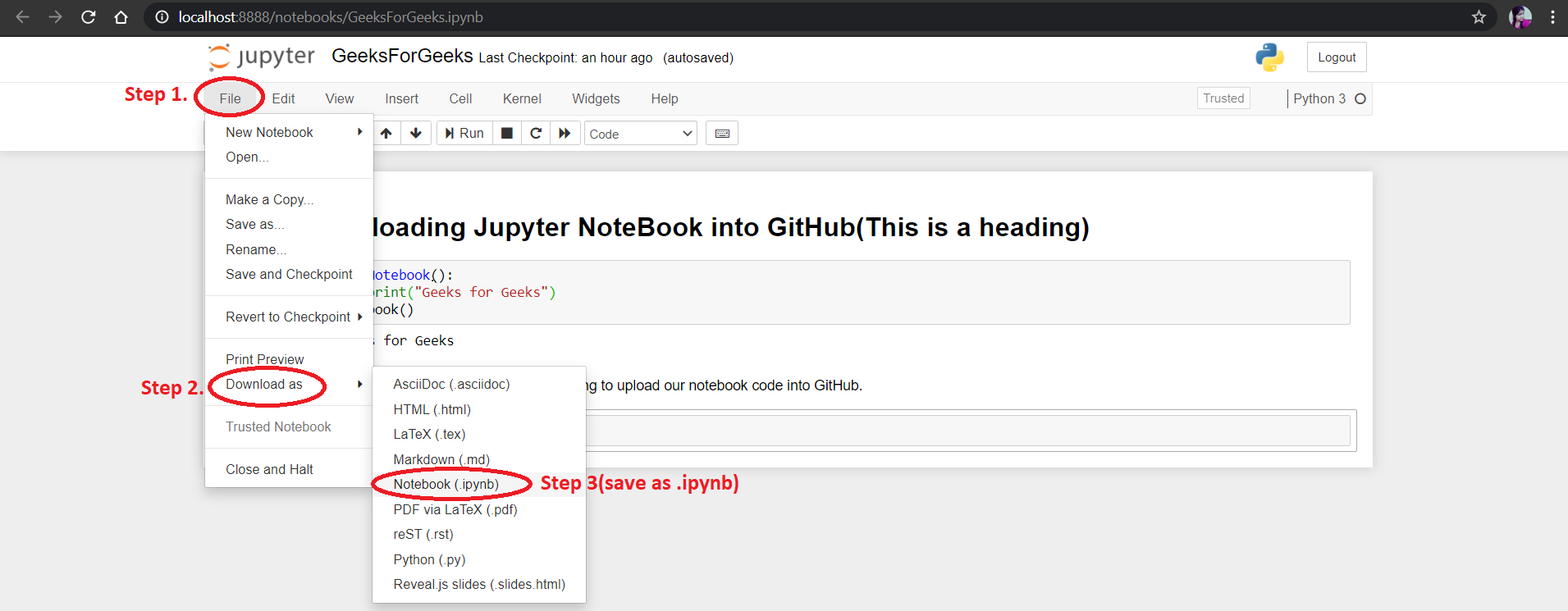

How do you turn this Jupyter Notebook Python code into a Python script? But you can use any code that you’ve written before in Jupyter.įor your convenience, here’s my Jupyter Notebook. I’ll go with the code we used in my pandas 3 tutorial. If interested, check out this excellent Stackoverflow thread: Scripting language vs. In the technical sense, the difference between programming and scripting is in the so-called “compilation step”… But since it’s not important for you right now, I don’t want to talk about that here. And *scripting* is more like an automation of a process - which is useful for exactly the things I mentioned above: mostly for doing data science related things. In the everyday practical sense we use the word *programming* more for functional things like the development of a web app or a mobile application. Note: It’s good to know that scripting is not exactly the same as programming. In that metaphor, you are the screenwriter and the director, Python is the actor and your computer is the producer. You write down very accurately what you want your computer to do and it will do it. A Python script is indeed very similar to a script of a movie. After all, you are the computer, you do the repetitive stuff… And I’ll go watch Netflix. Here’s the order of the tasks, please do that for me. Or, I can put these commands into a Python script, where I tell my computer that: I don’t want to press enter from line to line anymore. Loading raw data from a Python dictionary into another pandas DataFrame.Īs I said, I could execute these tasks manually (just as we did in pandas tutorial 3).Python-based data projects in practice can be broken down into small steps. But in this article, I’ll focus on the data science aspect. Programming or scripting?Īs you know, Python is not only for data science and not only for scripting… It’s basically a fully-featured programming language. Hopefully by the end of this article, you’ll think the same. It’s quite often the AHA-moment for them - and the tipping point in the learning curve when they say: “okay, now I get it.” I see this all the time… when I show beginners in my courses and workshops what a Python script (or an SQL or a bash script) really is, they are always as surprised as I was for the first time.


And I couldn’t believe that I was so afraid of it. It turned out that the whole concept is extremely simple. Luckily, I was wrong - and everything changed at the very moment when a senior data scientist showed me one of his scripts. Or more like something so technical and difficult that I would never be able to learn it.
Run code in python jupyter notebook step by step how to#
But I didn’t know how to “interchain” and automate these.īack then, scripting seemed like some kind of magic to me. I wrote commands and code snippets in the command line or in Jupyter… Sure. You want to write scripts! When I first learned how a script works…īefore we get into this, let me share one of my personal experiences regarding learning data science…īack in the day, when I was an intern and I had never ever written any data scripts yet, I couldn’t imagine at all how they work. You want to automate the execution of your Python codes. That’s coding.īut, in data projects, you don’t want to run everything manually. We’ve run Python functions, methods, commands and other operations one by one, manually. See, in most of my Python for data science tutorials we were writing code in Jupyter Notebooks. But when you start to automate these tasks (either it’s data cleaning, data loading, analytics, machine learning algorithms or anything else) you’ll rely heavily on scripting. When working on data science projects, you’ll write Python code all the time… You know that already. In this tutorial, you’ll learn how to run a Python script.


 0 kommentar(er)
0 kommentar(er)
